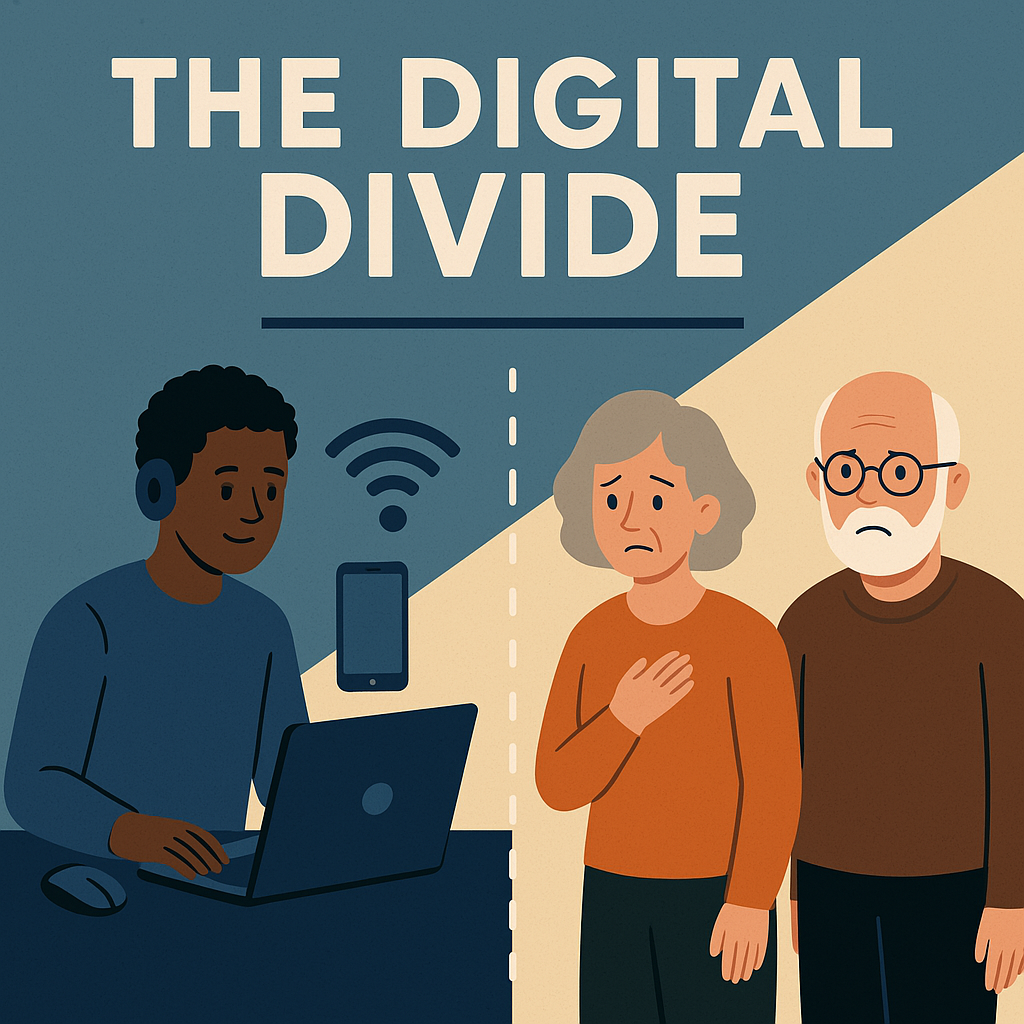We live in a digital age where access to technology plays a major role in our daily lives. From education and work to health and communication, digital tools are now essential. But not everyone has equal access to these tools. The gap between those who can use technology and those who cannot is called the digital divide. It’s a global issue that affects millions of people and deepens existing inequalities. Understanding the causes and effects of this divide is the first step toward building a more connected and fair society.
The digital divide refers to the difference between people who have easy access to digital technologies—like computers, smartphones, and high-speed internet—and those who don’t. This divide isn’t just about having a device. It also includes:
- The ability to use technology effectively (digital literacy),
- The speed and quality of the internet connection,
- And whether people feel confident using digital tools for tasks like online learning, banking, or applying for jobs.
The divide can be seen between urban and rural areas, between high-income and low-income households, and even between different age groups and education levels.
There are several reasons why this gap exists:
Many families cannot afford to buy a computer or pay for monthly internet services. Even when they can, they may only be able to afford low-quality devices or slow internet, which limits what they can do online.
In rural or remote areas, internet service might not be available at all. Building the necessary infrastructure can be expensive and time-consuming, which leads to long delays in digital access.
Even with access to technology, some people don’t know how to use it properly. Older adults, for example, might struggle with basic tasks like setting up an email or using video calls. Without training, technology remains out of reach.
Some digital platforms are only available in certain languages or aren’t built to support people with disabilities. This excludes many users from fully benefiting from digital services.
The digital divide has serious effects on people’s lives and futures:
Students without internet access or devices fall behind their classmates. Online learning, homework, and research become difficult or impossible. This leads to lower academic performance and fewer future opportunities.
Many job applications and training programs are online. Without digital access, people can’t search for jobs or build the skills they need for modern workplaces.
Telemedicine and online health services have become more common. But people without access to digital tools may miss out on important medical consultations and information.
In today’s world, social connection often happens online. The digital divide can lead to feelings of isolation, especially for older adults or people living alone.
Closing the digital divide is possible with the right efforts and partnerships. Here are some key steps:
Governments and companies can invest in building better internet connections, especially in rural and low-income areas. This includes both wired and wireless solutions.
Programs that offer low-cost or free devices and internet services can help more people get connected. Some communities already provide free Wi-Fi zones and refurbished computers to those in need.
Public libraries, schools, and local organizations can run workshops to teach people how to use computers, smartphones, and the internet. These programs should be open to all ages and skill levels.
Websites and apps should be easy to use and accessible to people with disabilities. They should also be available in multiple languages to serve diverse communities.
Teachers can help students learn digital skills in the classroom, and schools can lend out devices or provide internet access to families. Community centers can play a big role in helping residents stay connected and informed.
Technology is moving fast, and the digital world keeps expanding. If we don’t take action, the gap between the connected and the disconnected will grow even wider. But there is hope. More and more governments, schools, and organizations are working together to find solutions.
New technologies like satellite internet and 5G are helping bring fast internet to places that were previously left behind. Meanwhile, awareness about digital inequality is growing, pushing more people to take part in closing the gap.
The digital divide is not just a technology problem—it’s a social and economic issue that affects millions of lives. Bridging this gap is about more than giving people devices; it’s about giving them opportunities, education, and connection.
Everyone deserves a fair chance to participate in the digital world. By working together and focusing on access, affordability, and education, we can build a future where technology truly benefits everyone.
